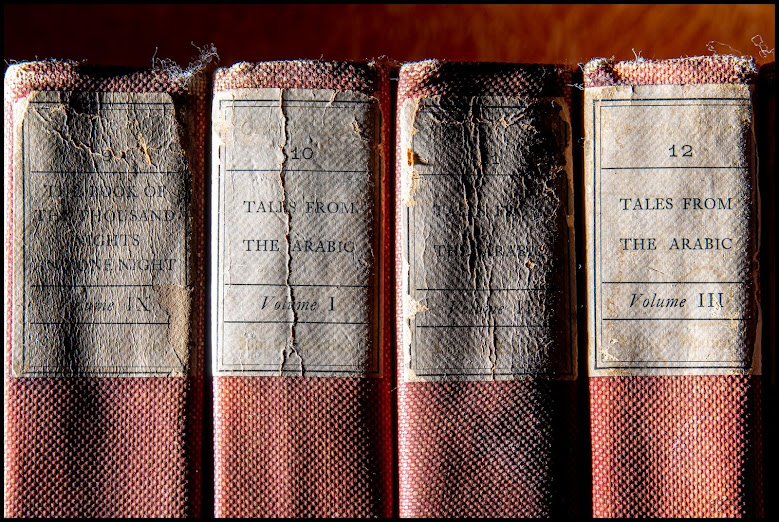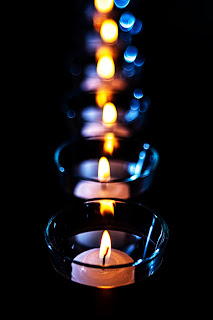A Photographic Journey on Books...
How has a simple pile of paper, string and leather survived for so many years and in the face of so much technological assault directed at it?
This is part of my series of blogs to explain what exactly is the Essence of a Book by photographically exploring my personal library.
And I'm starting with my limited edition of The Book of the Thousand Nights and One Night...
There is something about a book - a REAL book... that has permanence - that says to the reader that the author committed to their words and thoughts... and the act of producing that book, those thoughts, on a typewriter gives the author the ability to physically produce their thoughts and ideas - instantaneously and indelibly.
Here you just barely see the almost imperceptible indentation of letterpress.

Today we crave the telltale indent that says we are beholding a work of handmade skilled craftsmanship but back in the day it was typically considered by many to be bad form to press into the paper to the extent that we do today... the skill was in the ability to "press" only as much as was needed to apply the image perfectly – no more…no less - and pride was taken in getting it exactly perfect.
Now, don't get me wrong - I love the look and feel of letterpress today with the indentation being an integral part of the experience, but there is something to be said for the attention to detail that was the hallmark of letterpress.
Do you know why it is that we can pick up a book, a thick book, and turn to the page to reference a specific passage?


Studies have been done on retention of information, knowledge, via a book vs. via a digital screen. Turns out we tend to retain more - we tend to learn more - from a book... and we tend to forget more, tend to retain less, from a digital screen.
The studies seem to show that a book engages multiple senses - visual, tactile, and olfactory.
The olfactory can have to do with the materials - cotton or wood, leather or synthetic, etc...
The visual and tactile have to do with WHERE in the book we saw/learned/discovered something - how far from the front/back, where on the page, etc... the weight of the book in our hands - the balance of the book when opened to the section we are seeking... these are all queues that help us relate to the information in physical space – in three dimensions.
Or perhaps in four dimensions as all those physical, visual, and olfactory sensations may help us remember the last time we read that specific passage – place it in time… the 4th dimension…
In short, reading a book is an experience - and we humans remember experiences.






Comments
Post a Comment